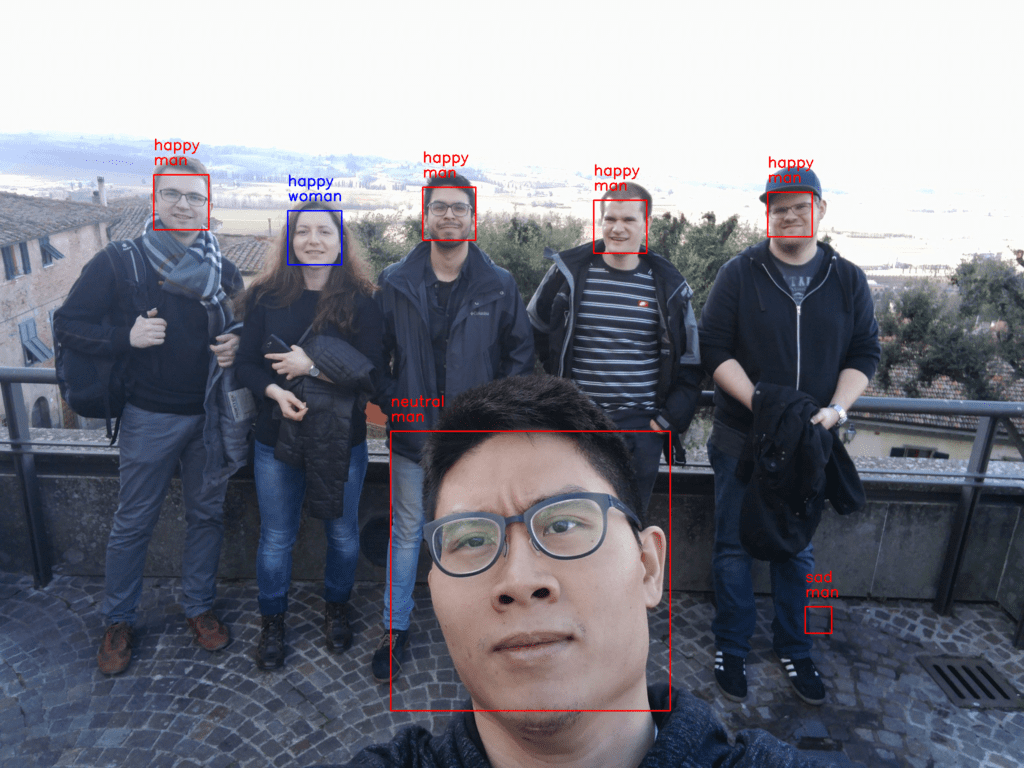Face classification and detection
Date: February 23rd, 2018
In the past, machines were unable to understand emotions directly, but a breakthrough in the last few years have allowed computers to recognize emotions using machine learning. One of the biggest challenges in designing personalized interaction is understanding the user’s thoughts. For example, a robot assistant would need to monitor a human’s emotions to succeed as a suitable replacement. In the future, computers or phones may use face emotion machine learning to collect data and select suitable content for the user to view.
One team created a face detection and emotion classification program using Python. According to the report, it can classify gender to a 96% accuracy, and classify emotions at a 66% accuracy. It was trained on a dataset of 460,723 images which defined each person as a woman or man, and classified each person’s emotions as: “angry”, “disgust”, “fear”, “happy”, “sad”, “surprise”, or “neutral”.

This program is implemented using a convolutional neural networking (CNN) which runs in real time. These are commonly used for image recognition and have been proven to be very effective. The image is put through a convolutional layer, which is essentially a filter to create a feature map to find matches. The classification uses multiple layers and lots of operations that require training to work. In summary, features are extracted from the image and compared to filters that are determined during training.

Source: medium.com
This project can potentially be very useful in the future as a meaningful form of interaction. Image recognition has revolutionized the way we interact with the world. Google photos uses CNNs to sort pictures by place, type, and person. Every time I pass through Chinese customs or unlock my phone, my face is compared with previous pictures for security purposes. I expect to see many useful purposes for CNNs, and improvements on this algorithm in the future.
Github Repo: https://github.com/oarriaga/face_classification
Paper: https://github.com/oarriaga/face_classification/blob/master/report.pdf